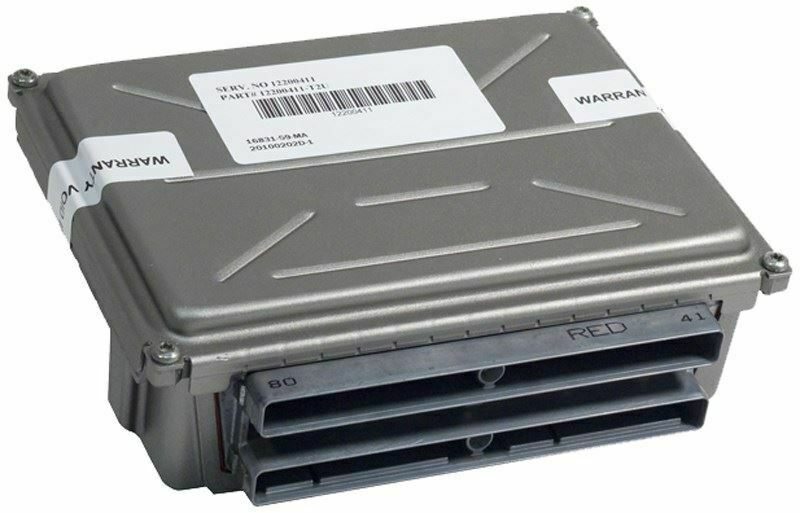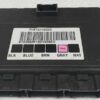Is Your GM Truck Running Rough? It Could Be The PCM.
If your 2003-2007 Sierra Denali, Silverado, Tahoe, or other compatible GM truck is suffering from mysterious engine problems, you’re not alone. The Powertrain Control Module (PCM), often called the Electronic Control Module (ECM), is the central computer of your vehicle. It manages everything from fuel injection and ignition timing to transmission shifting and emissions controls. When it begins to fail, it can cause a cascade of frustrating and difficult-to-diagnose issues that can leave you stranded.
A failing PCM doesn’t just impact performance; it can affect fuel economy, reliability, and even prevent your vehicle from starting altogether. Ignoring the signs can lead to more significant and costly damage to your engine or transmission down the road. This replacement module is the definitive solution to restore your truck’s factory performance and dependability.
Symptoms of a Failing Powertrain Control Module
- ✔ Check Engine Light: The most common sign. You may see codes related to multiple sensors, communication errors (U-codes), or internal processor faults.
- ✔ Rough Idle or Stalling: The engine may run erratically, stall at stops, or have difficulty maintaining a consistent idle speed.
- ✔ Poor Fuel Economy: Incorrect fuel and air calculations from a faulty PCM can cause your truck to consume significantly more fuel.
- ✔ Harsh or Erratic Shifting: The PCM controls the transmission. A failing module can lead to delayed shifts, hard gear engagement, or getting stuck in one gear.
- ✔ Engine Misfires: The module may fail to properly control the ignition coils, leading to misfires, hesitation, and a loss of power.
- ✔ No-Start Condition: In severe cases, the PCM can fail completely, preventing the fuel pump or ignition system from activating, meaning your truck won’t start at all.
The Right Solution: A VIN-Programmed 2003-2007 Sierra Denali PCM
Don’t settle for a generic, unprogrammed module that will require an expensive trip to the dealership. This PCM is a direct-fit replacement for part number 12589463 and its equivalents. The critical difference is our service: we flash the module with the latest, most up-to-date official GM software specifically for your vehicle. All we need is your Vehicle Identification Number (VIN) during checkout. This ensures that when the part arrives, it’s ready to communicate perfectly with all the other modules and sensors in your truck, just as it did from the factory.
This programming process is vital. It accounts for your specific engine, transmission, tire size, and other factory options. By using the latest software, we can also resolve common drivability issues or bugs that GM may have corrected in later software releases, giving you a driving experience that’s often better than the original.
From the Diagnostic Bay
We once had a 2005 Silverado 2500 come into the shop with a persistent random misfire and harsh 1-2 shift. The owner had already replaced all eight spark plugs, wires, and two ignition coils based on codes he pulled. The problem persisted. After hooking up our diagnostic scanner, we noticed that the PCM was slow to respond and was showing erratic data from the crank sensor, even though the sensor itself was new. We suspected an internal PCM fault. Instead of more guesswork, we installed a VIN-programmed module. The truck immediately started up, idled smoothly, and shifted perfectly on the test drive. The customer had spent hundreds on parts he didn’t need when the root cause was the vehicle’s computer all along.
Installation and Setup
Physically replacing the PCM is straightforward. On most of these GM trucks and SUVs, it’s located on the driver’s side of the engine bay, near the battery and airbox. After disconnecting the battery, you can unbolt the module and carefully unplug the wiring harness connectors. Installation is the reverse of removal. However, please be aware that after installing the new PCM, your vehicle will likely require a security relearn procedure (often called a Passlock or VATS relearn) and a Crankshaft Position Sensor Variation Relearn (CASE relearn). These procedures are necessary to sync the new PCM with your vehicle’s anti-theft system and crankshaft position sensor. Many mid-range scan tools can perform the CASE relearn, and the security relearn can often be done without any special tools following a simple key-on/key-off sequence. Instructions for this are widely available online for your specific model.
Frequently Asked Questions
Do I need to get this module programmed?
No! That’s the best part of our service. We program the module to your vehicle’s specific VIN before we ship it. It arrives ready for installation.
What is a VIN and why do you need it?
The VIN (Vehicle Identification Number) is your car’s unique 17-digit serial number. It contains information about the manufacturer, model, engine, transmission, and other factory-installed options. We use it to load the exact, correct GM software for your truck’s specific build.
Will this fix my check engine light?
If the check engine light is caused by a faulty PCM or a software issue that the latest GM calibration corrects, then yes, this will solve the problem. However, if the light is on due to a bad sensor or other mechanical issue, that part will still need to be addressed.
Is any other setup needed after I install it?
Yes, most GM vehicles of this era require a security relearn and a CASE (Crankshaft Variation) relearn. The security relearn syncs the PCM to your keys and can often be done without tools. The CASE relearn requires a capable scan tool and syncs the PCM to your crankshaft position sensor for accurate misfire detection.
Where is the PCM located on my 2004 Sierra?
On most 2003-2007 GM full-size trucks and SUVs, the PCM is located in the engine compartment on the driver’s side, typically mounted to a bracket next to the battery or near the air filter housing.


